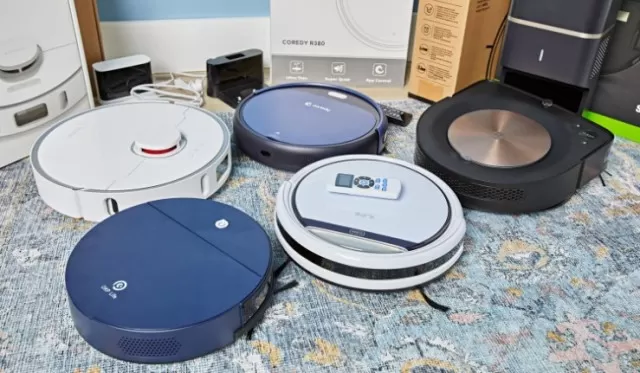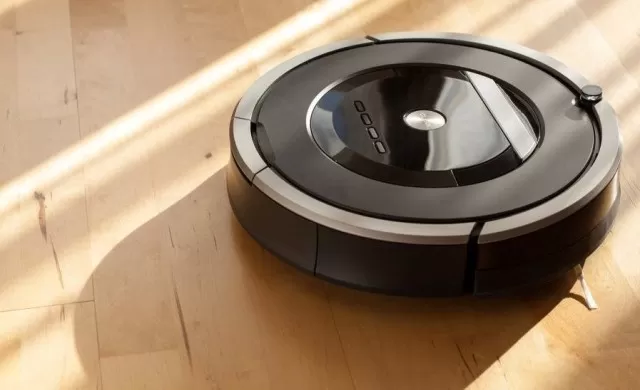With the rise of smart home technology, robot vacuums have gained popularity as a convenient cleaning solution.
These small devices can autonomously navigate and clean floors without human intervention, eliminating the need for manual labor and reducing noise disruptions.
However, not all homes are suitable for robot vacuums. Factors such as home layout, flooring type, and household composition can affect their performance. Consider these key factors when determining if a robot vacuum is the right choice for your family.
Factors to Consider Before Purchasing a Robot Vacuum

There are several important factors to consider before buying a robot vacuum.
It’s important to assess your home layout and desired technology features, as robotic vacuums are not one-size-fits-all solutions.
Home Size and Layout: Take into account the size of your cleaning space and the layout of your rooms.
Consider factors such as odd corners, raised doorways, and staircases, as they can impact the efficiency of a robot vacuum. Some robotic vacuums have obstacle sensors, but not all have safety mechanisms to prevent falling off edges.
To protect fragile items or prevent falls, you may need to block stairways or room entrances with baby gates. Additionally, manual Handheld Vacuums may be necessary to reach corners and stairwells that robots cannot navigate safely.
Flooring Type: Consider the predominant type of flooring in your home.
Some robot vacuums are designed primarily for hard floors and may not perform as well on carpets. Others are capable of both wet and dry cleaning, making them suitable for deep cleaning high-traffic areas.
Look for a robot vacuum that is best suited for your home’s primary flooring type. Otherwise, you may need to purchase multiple robot vacuums for different flooring zones.
Pets or Small Children: Keep in mind the presence of pets or small children in your home.
While robot vacuums have sensors to detect and avoid obstacles, they may not always recognize small objects like toys or pet hair clumps, which could be accidentally sucked up and damage the device. Additionally, curious pets may interact with or chase the robot vacuum.
It’s important to supervise the vacuum during its initial use. Ensure that both your children and pets have the temperament to allow the robot vacuum to operate safely.
If not, consider running the vacuum when they are out of the house.
Battery Life and Charging Time: Consider your cleaning schedule and compare the run time of different robot vacuums.
Longer battery life allows the vacuum to clean a larger area before requiring recharging, while shorter battery life means more frequent recharging. Battery life can vary among different models, so choose a robot vacuum that can cover your entire home without needing to recharge.
Cleaning Capabilities and Features: Look into the suction power, filter efficiency, automatic dirt disposal, mapping functionality, and programmed schedules of robot vacuums.
These features can provide convenience for busy individuals. Determine which features are most important for your home and find a robot vacuum that can fulfill your needs with ease.
Cost: Keep in mind the cost of robot vacuums.
New models with advanced features often come with higher price tags. It’s possible to spend a significant amount on a specific model only to find a newer one with similar features available at a similar price.
Remember that older, less expensive models may still offer the key features you need, especially if your home layout and flooring are standard. Additionally, consider the cost and frequency of replacing filters, as they are essential for the robot vacuum’s performance.
By considering these factors, you can make an informed decision when choosing a robot vacuum that is suitable for your home.
Advantages of Robot Vacuums

Robot vacuums offer several advantages that go beyond their primary function of improving cleaning efficiency and saving time.
Here are some additional hidden benefits of using robot vacuums:.
Time-saving: Robot vacuums are a convenient option for busy individuals who don’t have time to regularly and thoroughly clean their floors.
These devices can be programmed on a regular schedule, freeing up time for other tasks.
Efficiency: Robot vacuums are designed to clean hard-to-reach areas, such as under furniture, where traditional vacuum cleaners may struggle to reach.
Their maneuverability and compact size make them particularly effective in navigating tight spaces.
Energy efficiency: Due to their small size, robot vacuums generally consume less power compared to traditional vacuum cleaners, resulting in increased energy efficiency.
Reduced strain on the body: Constant bending and kneeling to vacuum around furniture and underneath couches can strain the back and knees.
Robot vacuums alleviate this physical burden by performing these tasks on your behalf.
Disadvantages of Robot Vacuum

While robot vacuums offer several advantages, there are some drawbacks to consider:.
Noise: Despite advancements in low-noise motor technologies, robot vacuum cleaners can still generate significant noise, especially when they bump into furniture or encounter obstacles.
Running them during the day when no one is home can help minimize disruption.
Cost: The technology involved in autonomous cleaning makes robot vacuums more expensive than traditional vacuum cleaners.
Prices for robotic vacuum cleaners typically range from $200 to $1000, and replacement filters can add to the overall cost.
Supervision required: Although technology has improved, robot vacuums still occasionally require human assistance.
They can get stuck under furniture or become entangled in cloth objects or hair clumps. They may also miss tight corners or leave dust behind on textured tile floors.
Adult supervision and periodic manual deep cleaning are still necessary to ensure thorough cleaning.
While robot vacuums offer significant assistance, they are not a complete substitute for traditional vacuum cleaners.
Certain tasks like reaching curtains or cleaning ceiling fan blades are better suited for conventional vacuuming methods.
*The information is for reference only.